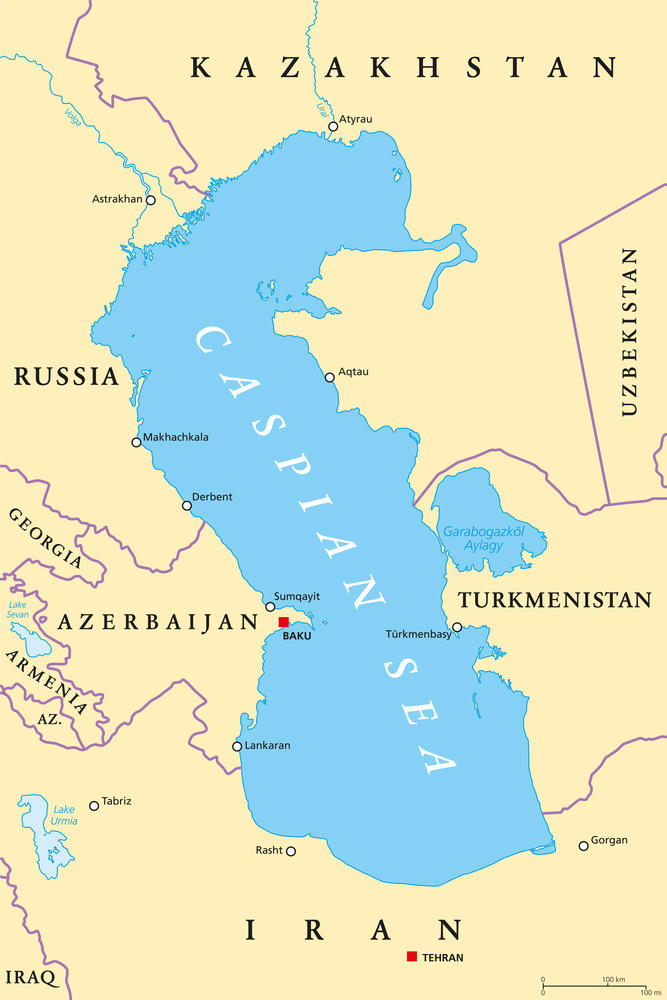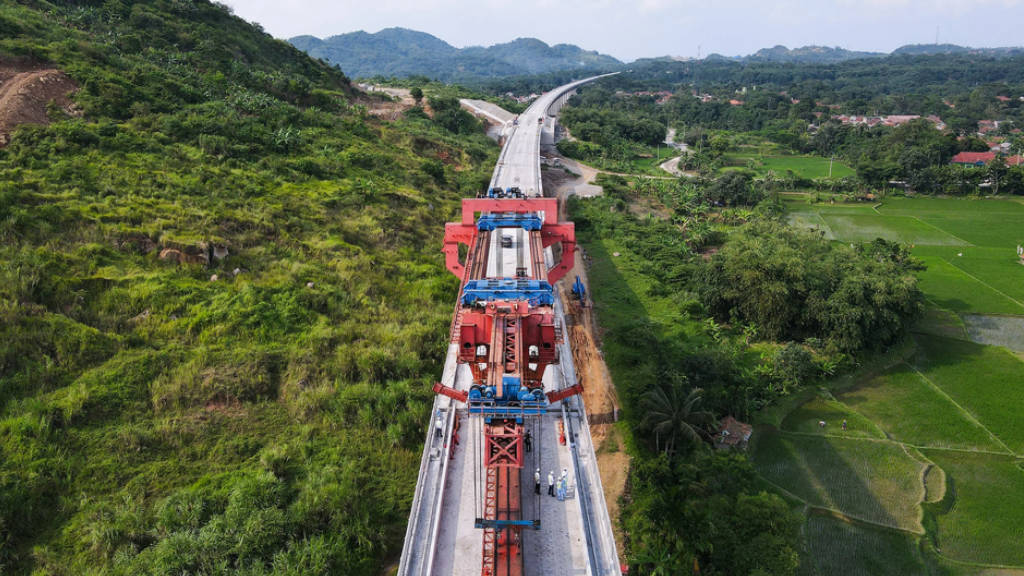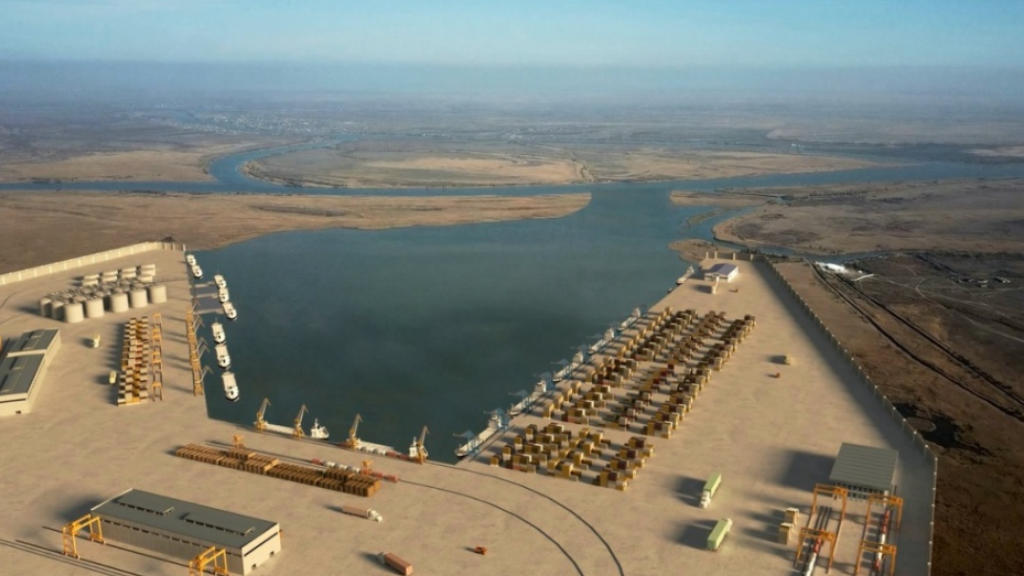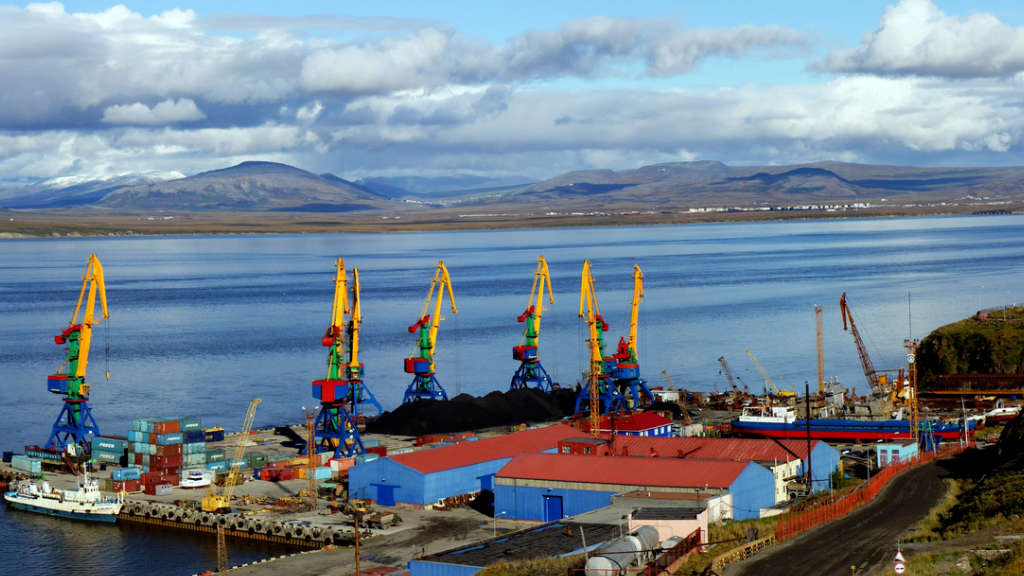In another example of China’s Belt & Road Initiative investments leading into Russia, China’s Guangdong Xinhui Cimc Special Transportation Equipment Co. Ltd; (GXCSTE) a container manufacturer, plans to develop cargo shipments through the Lotus Special Economic Zone (SEZ) in Russia’s Astrakhan Region, on the Caspian Sea.
GXCSTE, the Moscow-based Kiton Group, and JSC Lotus SEZ signed an agreement at the Eastern Economic Forum in Vladivostok to develop logistics and containerized cargo shipments along the International North-South Transport Corridor, including the use of infrastructure at the Astrakhan SEZ Port.
Lotus SEZ deputy CEO Andrei Nalimov was quoted as saying “Kiton Group has been engaged in cargo transportation since 2009, while the Guangdong Xinhui Cimc Special Transportation Equipment Company makes cargo, specialized and module containers, as well as vehicles. Cooperation with these partners will be a stimulus in the development of transport services, including with the use of the Astrakhan port SEZ’s infrastructure.”
He said the construction of container ships at the Lotus Shipyard that can carry international standard containers, including refrigerated units, and will help consolidate efforts to launch scheduled shipments along the INSTC, making them regular and ensuring a constant flow of cargo traffic through the Astrakhan region. The Lotus Shipyard, the SEZ’s anchor resident, is a unit of Russia’s United Shipbuilding Corporation southern shipbuilding division. USC is the largest shipbuilder in Russia.
The Lotus SEZ, formed almost 10 years ago, lies on 996 hectares in the Narimanovsky district, 40 km from Astrakhan. It is aimed at localizing manufacturing such as shipbuilding and production of oil, gas, and other industrial equipment, as well as the high-tech sector.
Prime Minister Mikhail Mishustin signed a resolution in November 2020 to create a port SEZ and Caspian cluster in Astrakhan’s Olya port as part of comprehensive measures to develop the INSTC. The Lotus SEZ was merged into the cluster with the port SEZ.
The Astrakhan and Olya ports combined handled 4.477 million tonnes of cargo in 2023, 50% more than in 2022. Cargo traffic through the ports is growing amid increased demand for shipments along the INSTC, which both ports serve.
The Astrakhan Regional Governor, Igor Babushkin said cargo handling at ports in the region could reach 5 million tonnes in 2024, which would be an 11.7% increase from 2023.

Russia’s interest in the INSTC is threefold. It includes a direct north-south route to and from Russia via the Caspian Sea to Iran, with further links transiting Iran to its Persian Gulf ports and access to the Middle East, India, and East Africa.
It also runs east, with connectivity via Kazakhstan and Turkmenistan to other markets in Central Asia as well as onto China. Via Baku, (Azerbaijan) it also runs west and to markets in Georgia, Armenia, Turkiye and ports offering access to the Black Sea and beyond.
Further Reading






